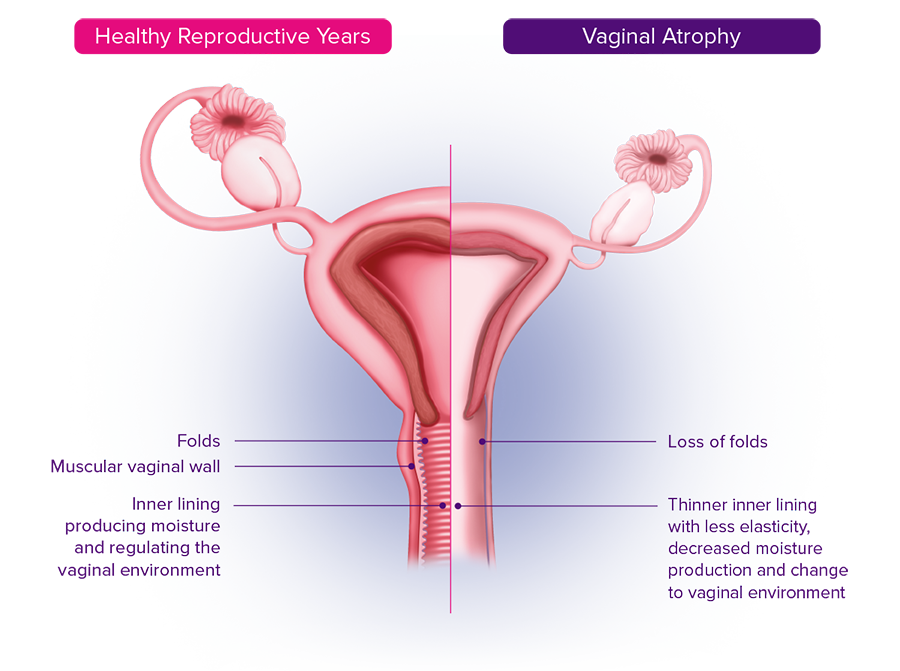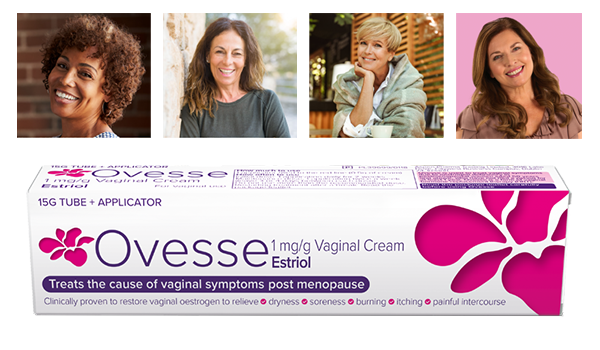Menopause & Vaginal Discomfort

The menopause is part of the normal ageing process and is due to the natural decline in oestrogen production. In the UK, the average age of menopause is 51.
50% of postmenopausal women experience vaginal symptoms including dryness, soreness, burning, itching or painful intercourse. In medical terms, such symptoms may be due to genitourinary syndrome of menopause which includes vaginal atrophy.
However, many women do not talk about these symptoms and keep them to themselves instead.
What postmenopausal women with one or more vaginal or vulval atrophy symptoms experience*
• 41% have irritation
• 34% have pain during sexual intercourse
• 22% have tenderness
• 47% felt they were aging
• 23% felt less feminine
• 66% said it interfered with sexual enjoyment
• 62% said it interfered with their sexual spontaneity
But 45% have never specifically discussed their symptoms with a healthcare professional.
* REVIVE-EU survey of 1000 UK postmenopausal women aged 45-75

Vaginal Atrophy (VA)
Vaginal symptoms can start any time after the menopause. The medical term for this is vaginal atrophy which, unlike hot flushes or night sweats, is unlikely to resolve without treatment.
Postmenopausal changes to vaginal tissue

Vaginal atrophy is caused by the decrease in oestrogen which occurs during and after menopause.
The lack of oestrogen causes the tissues in and around the vagina to become thinner and more fragile. This also causes a decrease in both the elasticity of the vagina and the production of mucus that maintains a moist vaginal environment, and an alteration to the range of bacteria in the vagina. These changes can result in the symptoms of vaginal atrophy.

Help Is Available

Despite the impact of VA on women’s lives, many remain reluctant to talk about their symptoms, and may not recognise that treatment is available.
Ovesse is available without prescription and provides discreet, easy to use treatment that eases symptoms and treats the cause of genitourinary syndrome of menopause, including vaginal atrophy.
Click the button below for more information about Ovesse.
Click the button below to buy Ovesse and complete the pharmacy checklist on the retailer’s website. This ensures that Ovesse is suitable for you.
UK-EST-06-24-00001 September 2025
